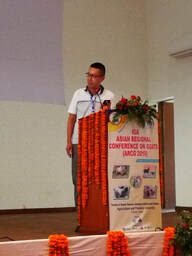 First, I would like to thank the host organization and the people of Nepal for your warm welcome and hospitality. You are genuinely lovely people, and I appreciate your sincerity and friendship. Congratulations go to the Faculty of Animal Science, Veterinary Science and Fisheries at the Agriculture and Forestry University for a successful conference. Comparing to the outcomes of the Conference and the efforts to elevate the importance of goats as a species that can alleviate poverty, and improve food security and nutrition, our little inconvenience during the very long-distance traveling becomes so trivial. Just like the goal of increasing production efficiency of goats, quality is far more important than quantity. I understand that there are many conferences to be hosted by the University in the near future, I encourage the university to engage in a thought process to focus more on the quality of scientific programs, more participation by the students and faculty, and a smoother logistic arrangement.
0 Comments
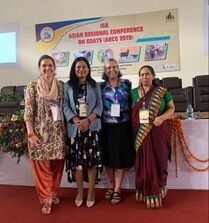 Marisia Geraci, Neena Gorkhali, Sharada Thapaliya, and Beth Miller Marisia Geraci, Neena Gorkhali, Sharada Thapaliya, and Beth Miller The Asian Regional Conference on Goats has just concluded and was an incredible success. The conference was held from October 20th to 23rd in Chitwan, Nepal, with the support of the Ministry of Agriculture and Livestock Development, Department of Livestock Services, Nepal Agricultural Research Council, Heifer International Nepal, and University Grants Commission. The main aim of the conference was to gather researchers, academicians, and development entities to exchange knowledge and technologies generated in the field of goat research and development across the globe. To learn more, visit the conference website: afu.edu.np/vet/arcg2019. 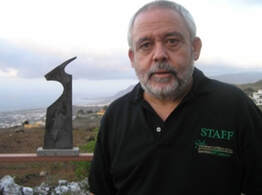 After an outstanding life-long career with Canarian Agricultural Research Institute (Instituto Canario de Investigaciones Agrarias), Dr. Juan Capote has decided to retire after serving many years as its Director of Animal, Pasture, and Forage Production Unit. A native of Santa Cruz de La Palma in Canary Islands, Dr. Capote’s academic credentials include a Diploma in Health from Real Academia de Medicina, a BSc in Biology from Universidad de La Laguna, a BSc in Veterinary Studies from UCM - Madrid, and a Ph.D. from University of Las Palmas de Gran Canaria. Dr. Capote contributed significantly to the advancement of the scientific knowledge with 217 publications including books, chapters, scientific and technical articles. He also had 180 presentations at various national and international conferences By Juan Capote, IGA Past-President & Jean-Marie Luginbuhl, IGA Secretary-Treasurer In August 2018, Juan Capote as IGA Past-President, Herve Hoste as IGA Board Member, Zaisen Wang as IGA Member from Langston University and Jean-Marie Luginbuhl as IGA Secretary-Treasurer participated and made oral presentations at the 2018 Chinese National Sheep and Goat Conference held in Bengbu 15-18 August. We had been invited by Dr. Yingjie Zhang, president of the Chinese Sheep and Goat Association, IGA Board Member and Professor and Dean from the Agricultural University of Hebei. In addition to the scientific presentations, the attendees visited two sheep farms. Unfortunately, typhoon Rumbia passed through Bengbu during the conference and drenched the region with heavy rains accompanied by strong wind gusts. While at the meeting, we interacted with Dr. Luo Jun, IGA Regional Director from Northwest A&F University. Following the National Sheep and Goat Conference, Juan Capote and Jean-Marie Luginbuhl traveled to Fuping, in the province of Shaanxi, to attend and participate at the 2nd World Dairy Goat and Sheep Industry Development Conference where they met Dr. Maria Fresno, IGA member from the Canary Islands, Spain and Vicky McLean, IGA Country Representative from New Zealand. The four of us had been invited by Dr. Binyun Cao from Northwest A&F University. Also attending the conference were Dr. Luo Jun, IGA Regional Director from Northwest A&F University and Dr. Sun Haizhou, IGA Country Representative for Northwest China and Inner Mongolia. Maria, Juan, Vicky and myself made presentations during the conference and at several other locations post-conference. In Quianyang, we made presentations in a session for farmers and visited the goat show where the farmers had the best milking goats received a monetary incentive. While at the conference, we attended a meeting, chaired by Dr. Binuyn Cao, along with conferences attendees from Australia and New Zealand, to discuss the main organizational body structure of the International Dairy Goat/Sheep Industry Association (IDGSIA). The Association was registered in Paris on August 18, 2018. We also visited several dairy goat farms and very modern milk processing plants manufacturing milk powder and became part of a panel ranking powder milk samples according to solubility, color, odor, and flavor. Jean-Marie Luginbuhl also visited the Animal Science department of Northwest A&F University in Yangling, the university experimental farm, and an animal feed manufacturing plant owned and managed by a Northwest A&F University alumnus. Finally, Jean-Marie made a presentation to Northwest A&F University Animal Science students.
1. Introduction
In the United Kingdom, the production of goat milk has changed drastically in the last ten years. The industry is continuously looking for significant future developments in areas such as artificial insemination and genomics, disease control, mortality reduction and protocols for rearing kids. Nonetheless, the goat industry is not a notable livestock sector in the United Kingdom, as evidenced by the evolution in the number of animals during the last 25 years (Figure 1). According to FAO census data, the total number of animals was at a maximum in 1990, followed by a continuous decline until the beginning of the 2000s. After that, the number of heads showed an upswing with some peaks and valleys, and a linear increase from 2010 to 2016 (FAOSTAT, 2016). The largest concentrations of commercial goat operations are found in York, Somerset and Worcestershire counties, all of them located in England.  We are sad to report the passing of Dr. Jean Boyazoglu who died on May 17th. His ashes will be spread on the Mediterranean Sea on June 1st at 11:00 am in Menton, France. We mourn the loss of a dear friend, colleague and fellow goat enthusiast. Jean served as IGA’s President from 1992 to 1996, and as Editor-in-Chief for Small Ruminant Research from 2005 to 2012. 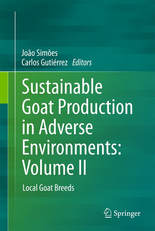 Local Goat Breeds Editors: Simões, João, Gutiérrez, Carlos Some chapters were written by IGA members. 6) Adaptation of Local Meat Goat Breeds to South African Ecosystems – Carina Visser 16) The Canary Islands’ Goat Breeds (Majorera, Tinerfeña, and Palmera): An Example of Adaptation to Harsh Conditions – Noemí Castro, Anastasio Argüello and Juan Capote 18) Current Status of Goat Farming in the Czech Republic – Zuzana Sztankoova and Jana Rychtarova About this book This book covers more than 40 indigenous goat breeds and several ecotypes around the globe and describes genotypic and phenotype traits related to species adaptation to harsh environments and climate change. It also addresses sustainable global farming of local goat breeds in different production systems and agro-ecosystems. Discussing three main global regions: Asia, Africa, and Europe, it particularly focuses on adverse environments such as mountain, semiarid and arid regions. The topic of this highly readable book includes the disciplines of animal physiology, breeding, sustainable agriculture, biodiversity and veterinary science, and as such it provides valuable information for academics, practitioners, and general readers with an interest in those fields. READ MORE ABOUT THESE BOOKS…
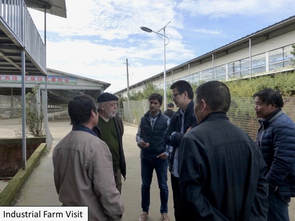 Written by Juan Capote, IGA past president In 2016, Beth Miller as IGA president and I were invited by Prof. Binyun Cao from Northwest A&F University to participate the following year in a conference concerning the dairy goat industry. Beth Miller could not attend due to scheduling conflicts, so I went as IGA representative and also as Honorary President of the conference Organizing Committee. The conference, titled “The International Conference of Dairy Goat Industry Development & International Symposium on Dairy Goat Industry Technology” took place on October 10 to 12, 2017 in Quianxian, Shaanxi province. During this trip, I visited three large factories: one just completed, another one in construction and another one in the planning stages. It was my 6th visit to China as an IGA officer. In addition, I had been the guide of a Chinese delegation who visited Spain in 2015. Book Announcement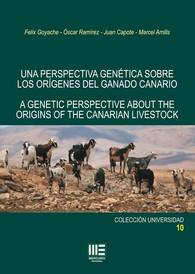 The food animals with the largest distribution on Earth are goats, with more than one billion heads. Sixty-one percent of these are distributed in twenty-seven percent of the poorest countries. Goats can be found in the Polar Circle or in the tropical rain forests, in the steepest mountains or in desert regions, on high-tech farms or in refugee camps. Nonetheless, most of them survive in pockets of poverty, among the most outcast pariahs, where their very existence can separate life from death in humans. This study focusing on the genetic perspective of the origins of goats from the Canary Islands contributes to the universality of that specie. In addition, the book includes research that demonstrates the influence of goats from the Canary Islands on American ‘creole’ genotypes. Finally, the book also discusses the origins of sheep and swine from the Canary Islands. Anuncio del libro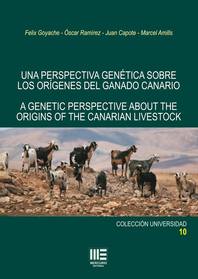 Los animales de abasto con mayor distribución en la Tierra son los caprinos, con más de mil millones de ejemplares. El 61% de éstos se encuentran repartidos en el 27% de los países más pobres. Se pueden encontrar cabras en el Círculo Polar o en las selvas tropicales, en las montañas más abruptas o en los desiertos, en granjas tecnificadas o en los campamentos de los refugiados. Pero en su gran mayoría sobreviven en las bolsas de pobreza, junto a las parias más parias, allí donde su sola existencia puede separar la vida de la muerte entre ser humanos. Este estudio de la perspectiva genética sobre los orígenes del ganado canario contribuye a la universalidad de esta especie. Además, el libro recoge trabajo de investigación donde se demuestra la influencia del ganado canario sobre los genotipos criollos americanos. Por otra parte, el libro también trata de los orígenes de los ovinos y porcinos canarios. |
IGA Blog
The International Goat Association promotes goat research and development for the benefit of humankind, to alleviate poverty, to promote prosperity and to improve the quality of life. Archives
May 2024
Categories
All
|
|
International Goat Association
2516 Millbrook Rd., Little Rock, AR72227 USA email: [email protected] -454-1641 |
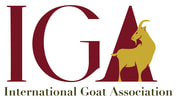
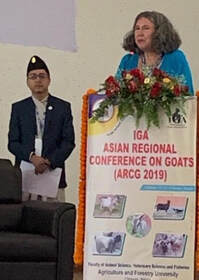
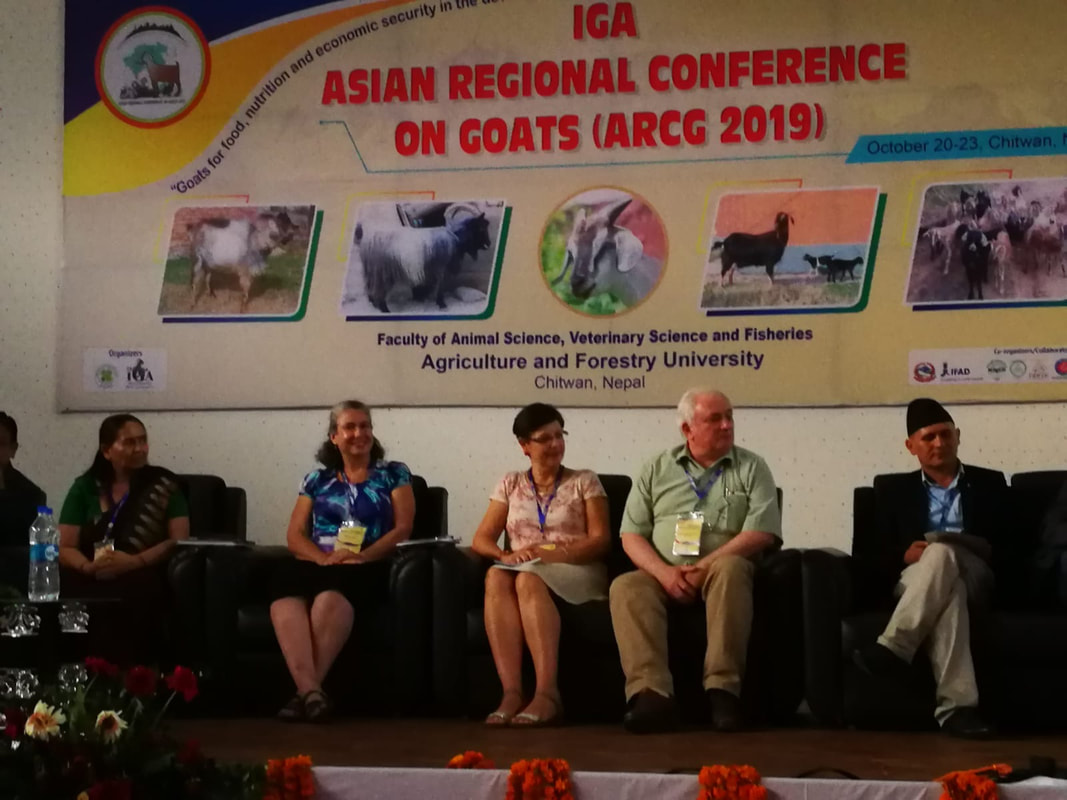
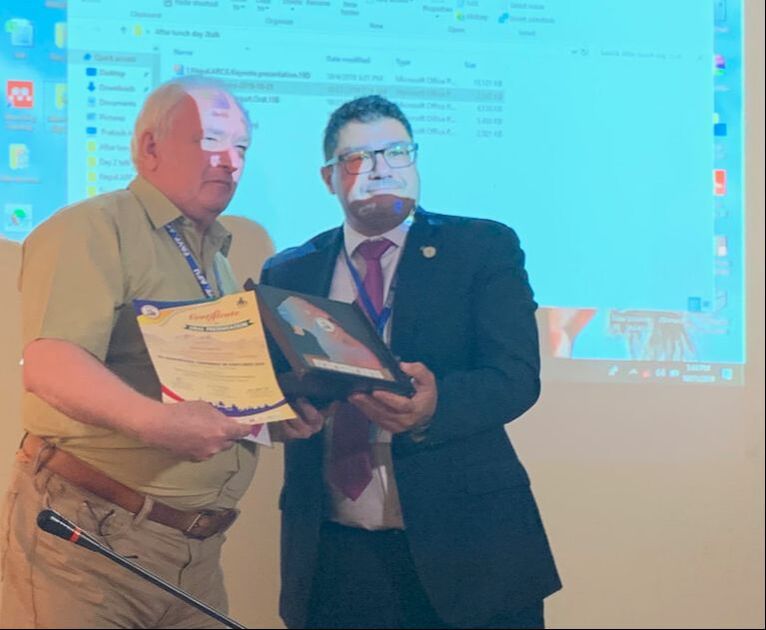
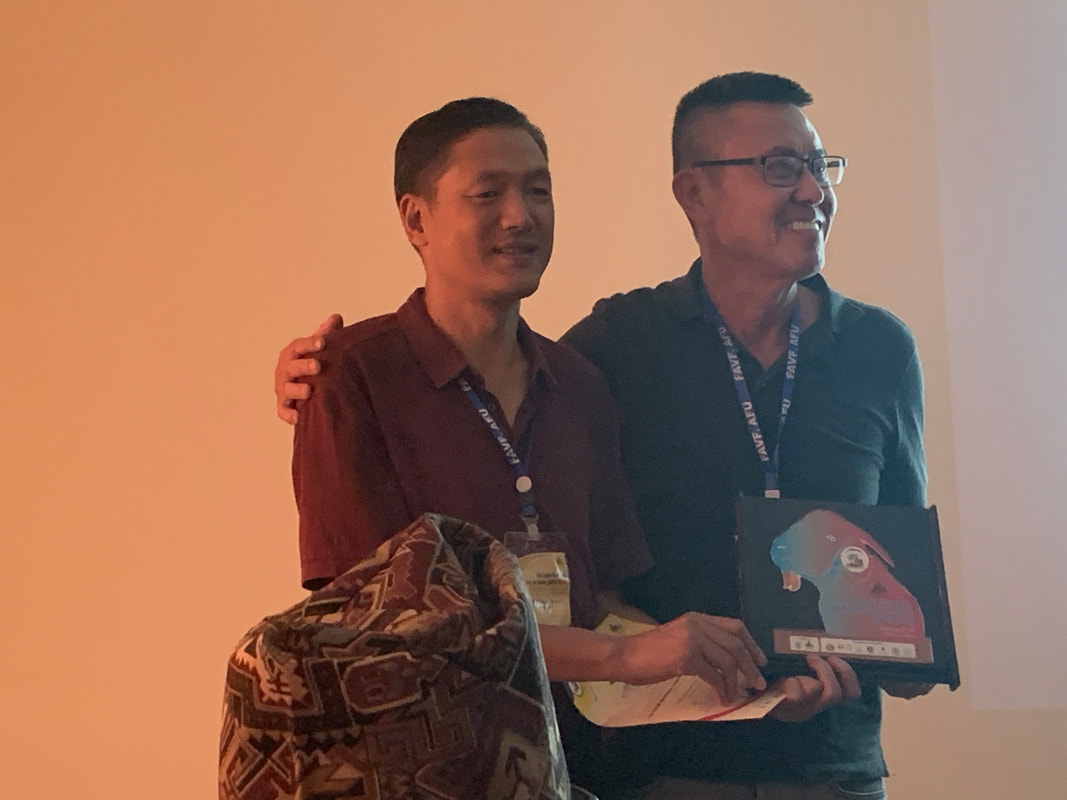
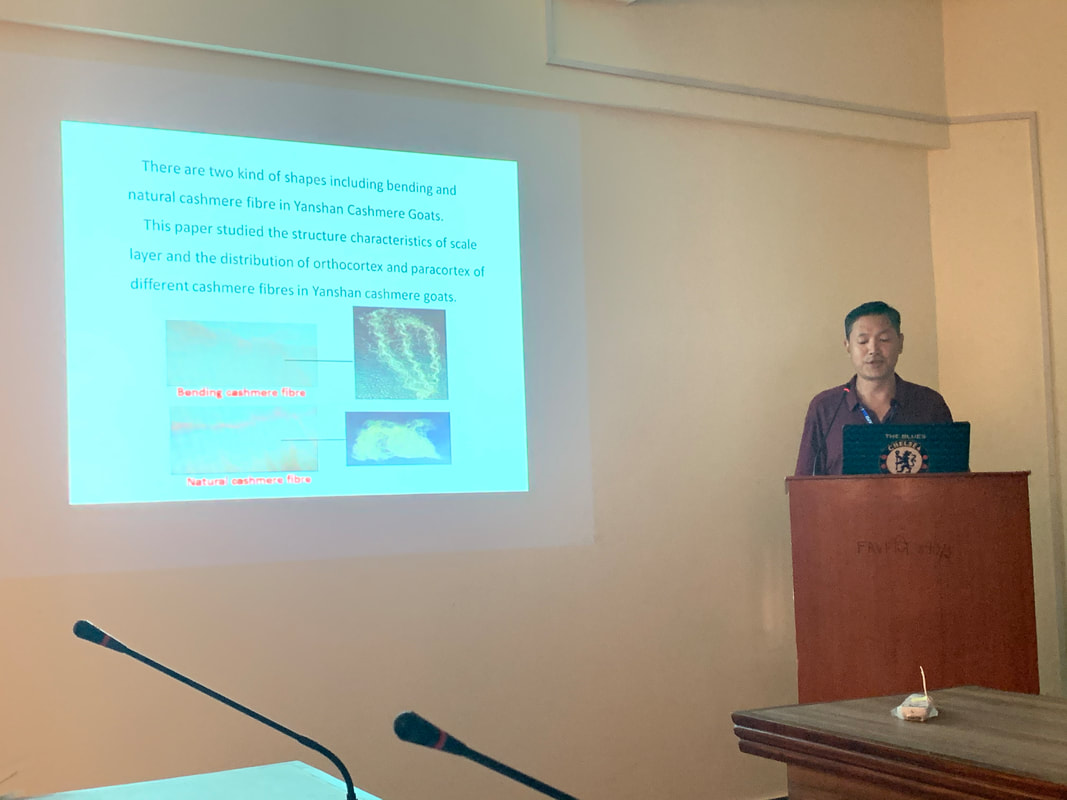
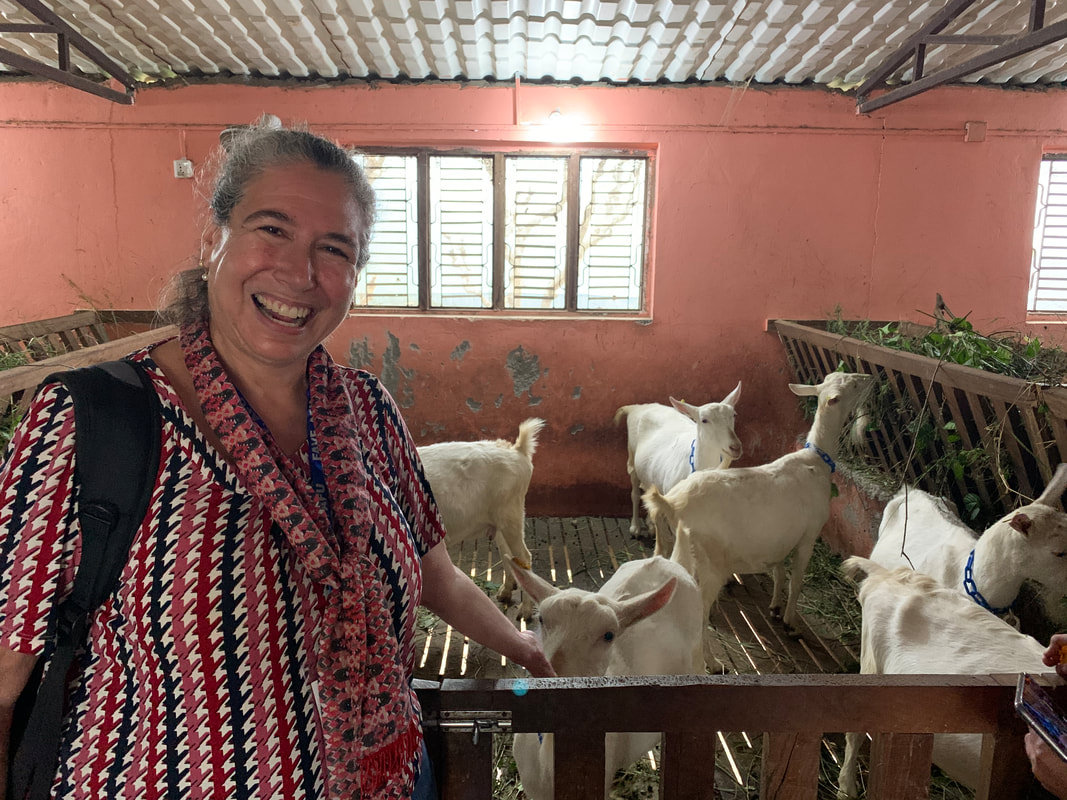
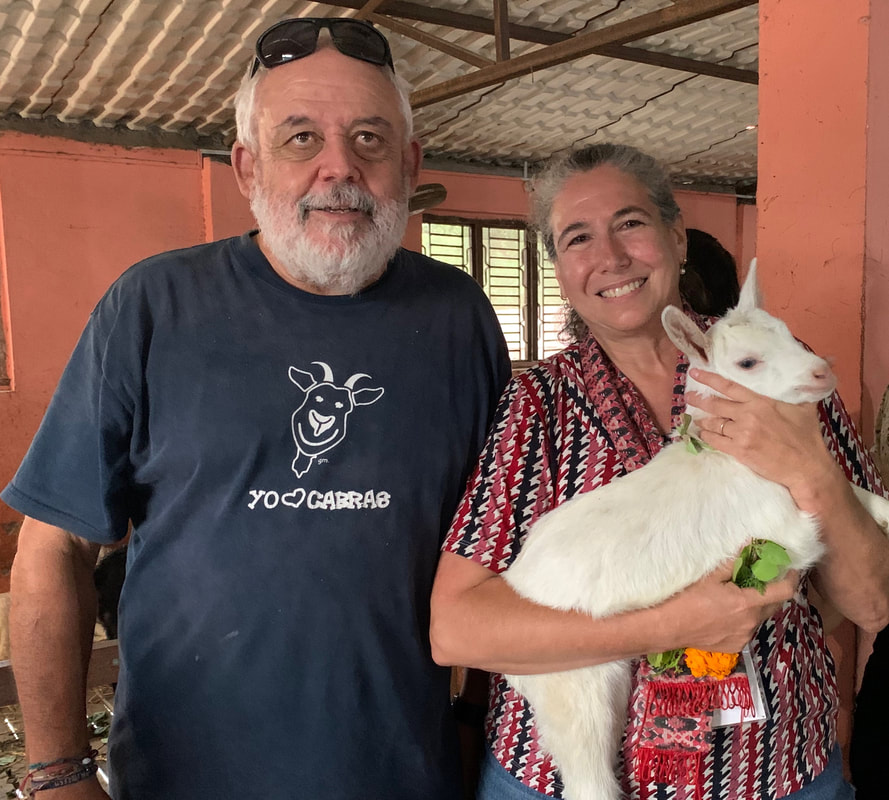
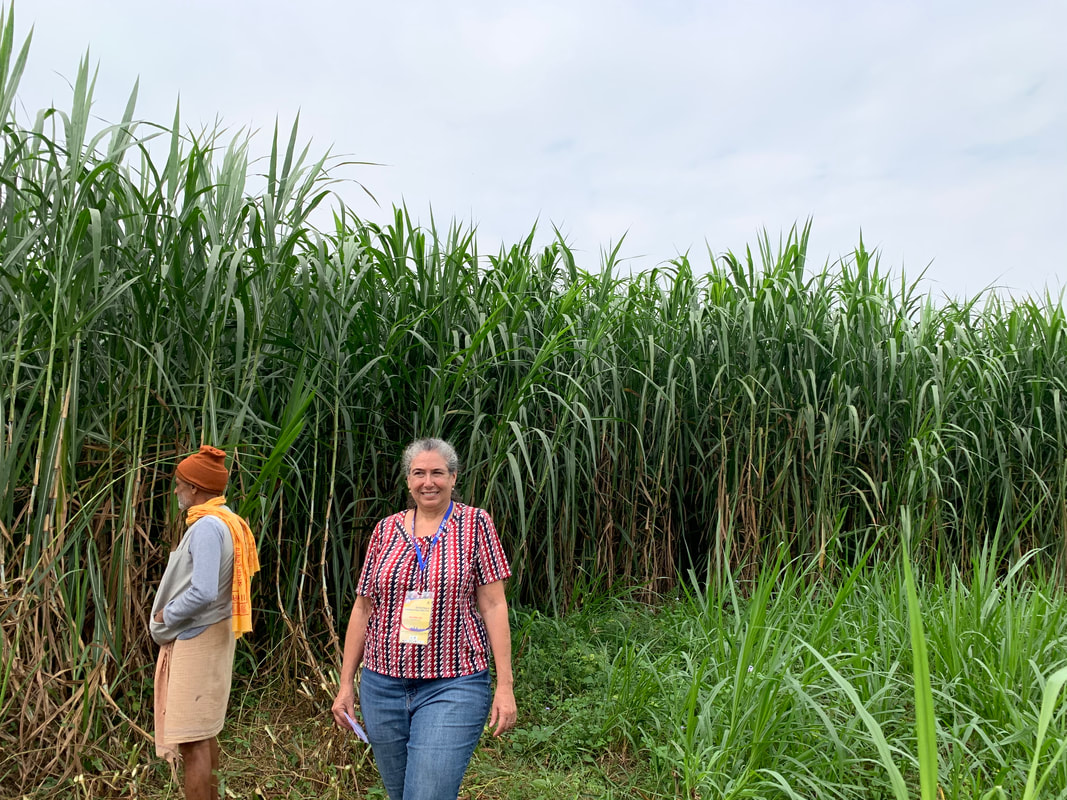
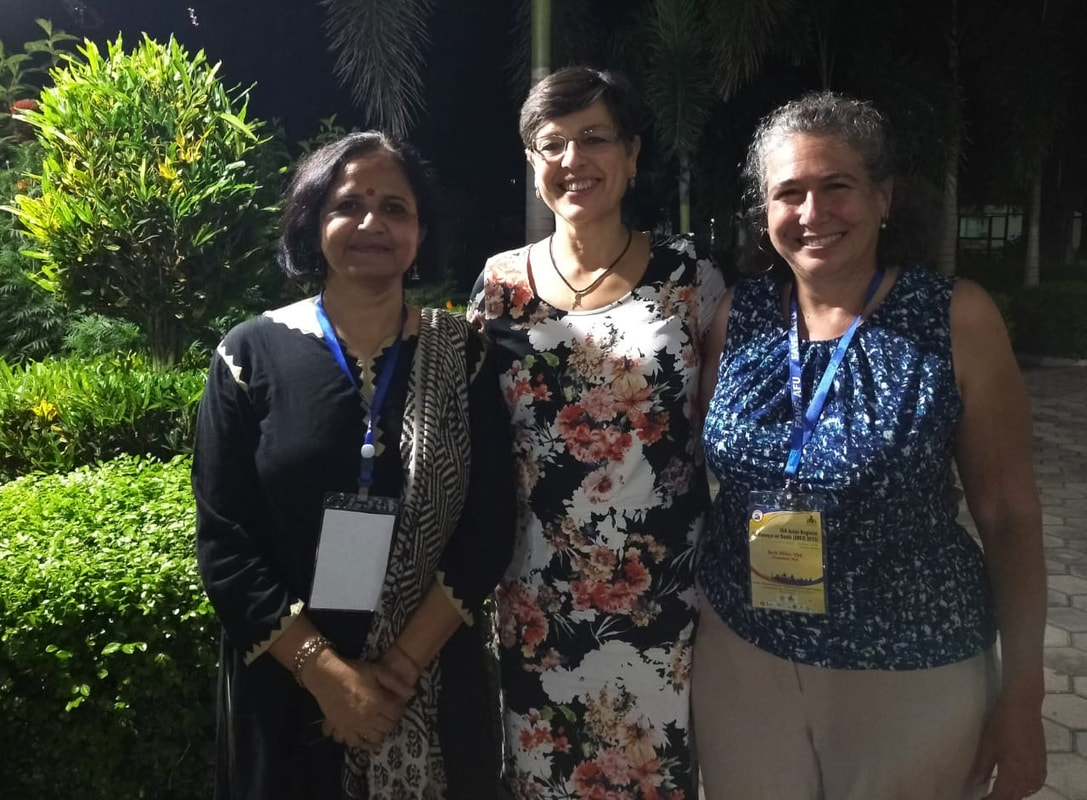
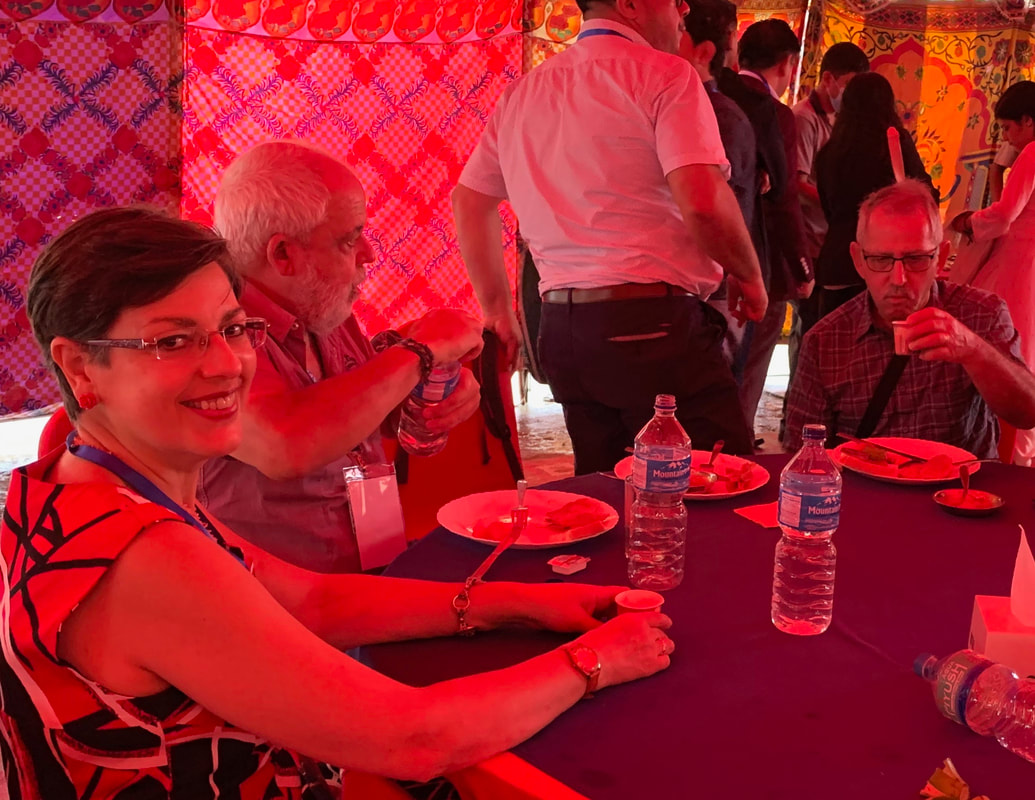
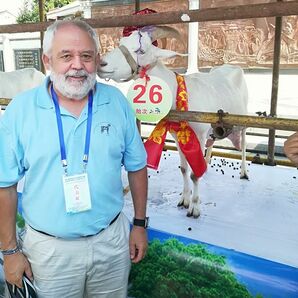
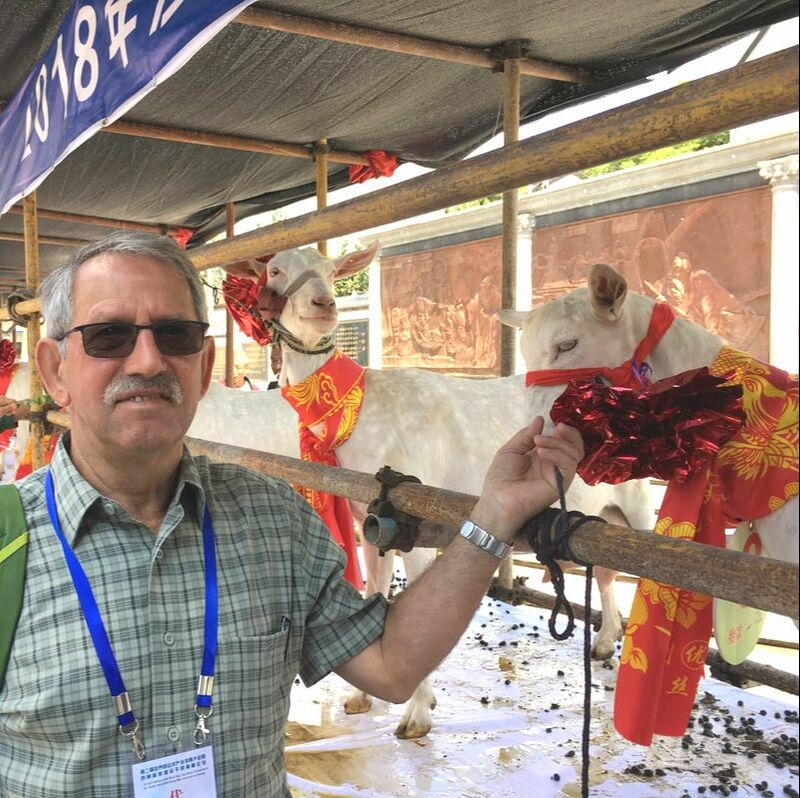
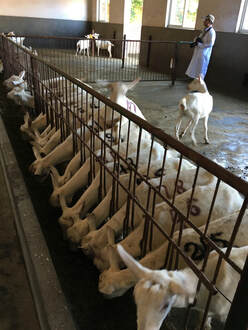
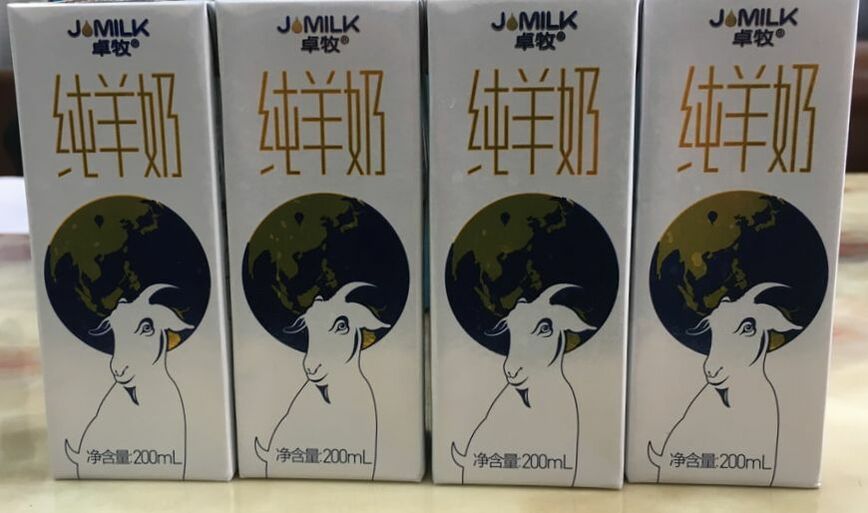
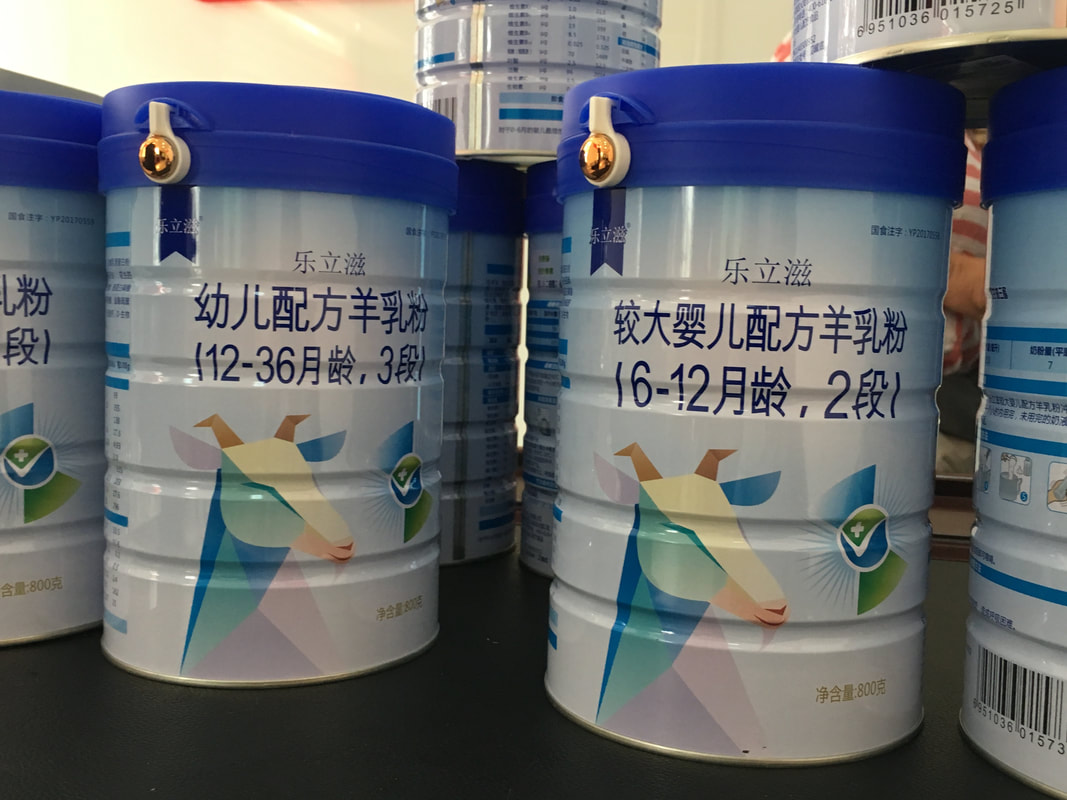
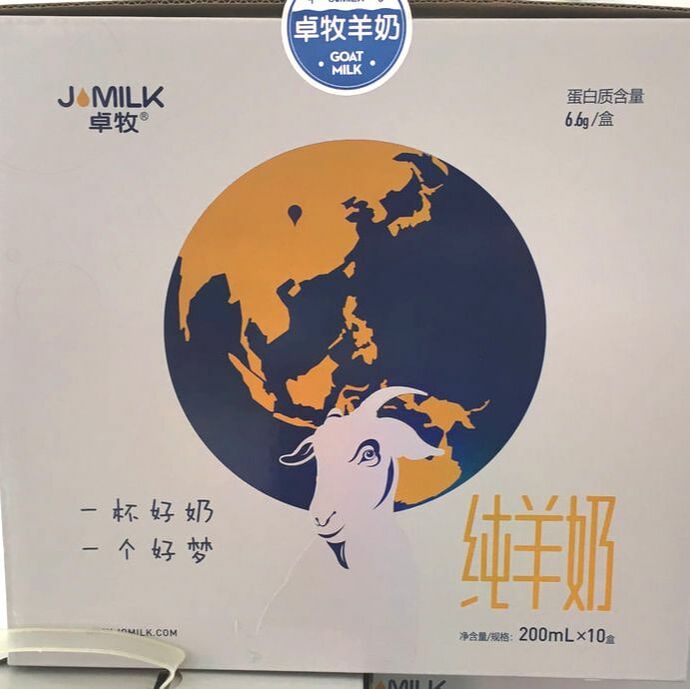
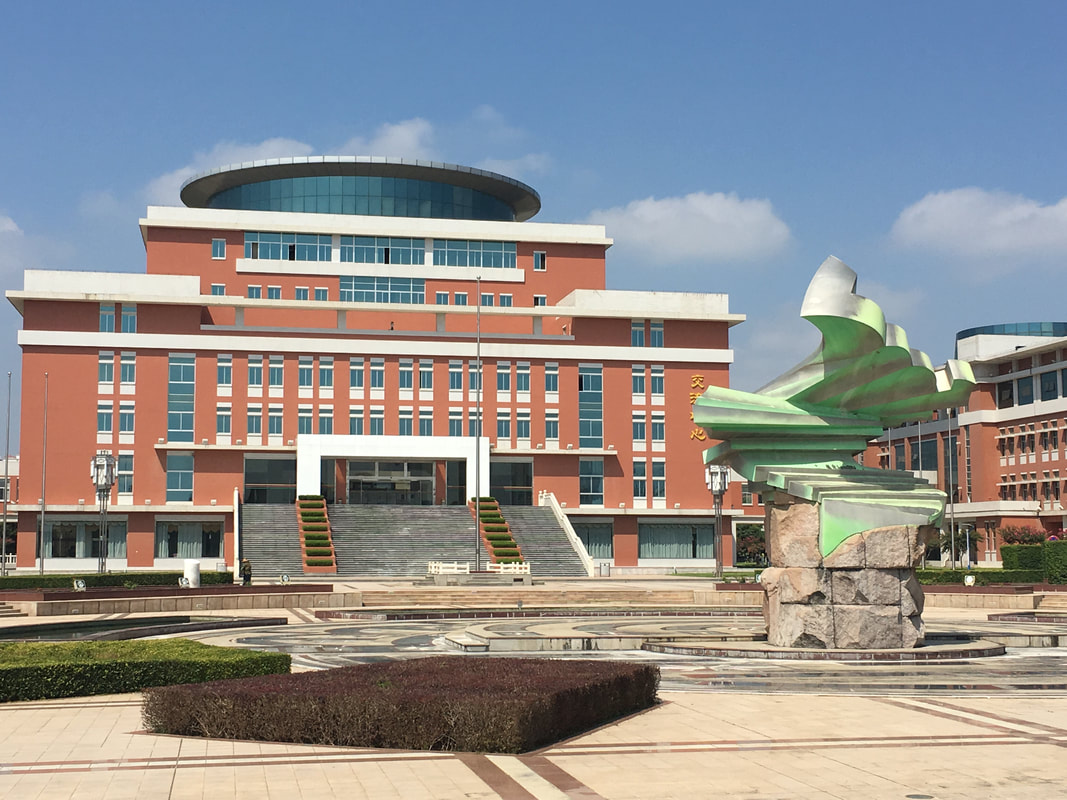
 RSS Feed
RSS Feed